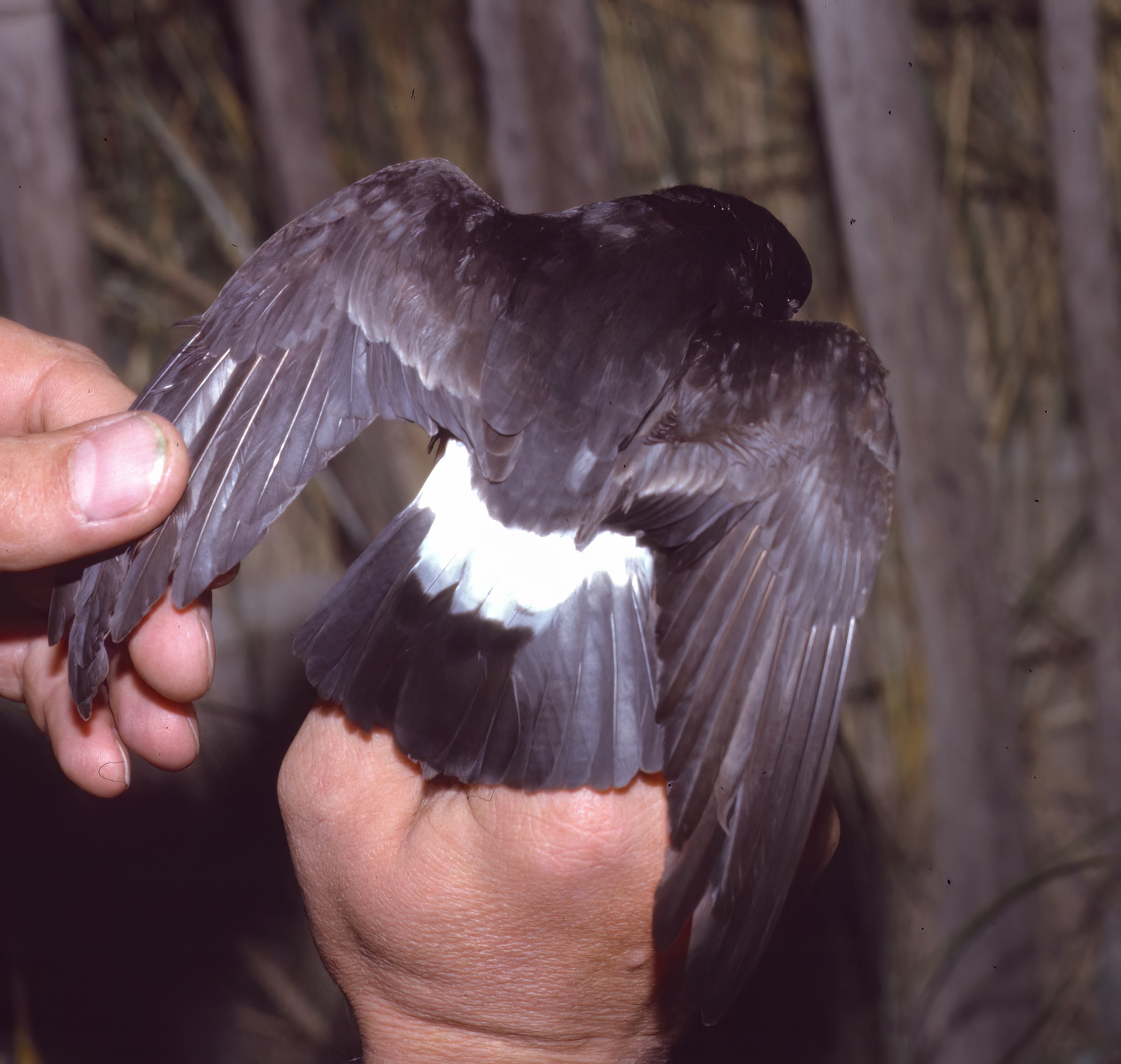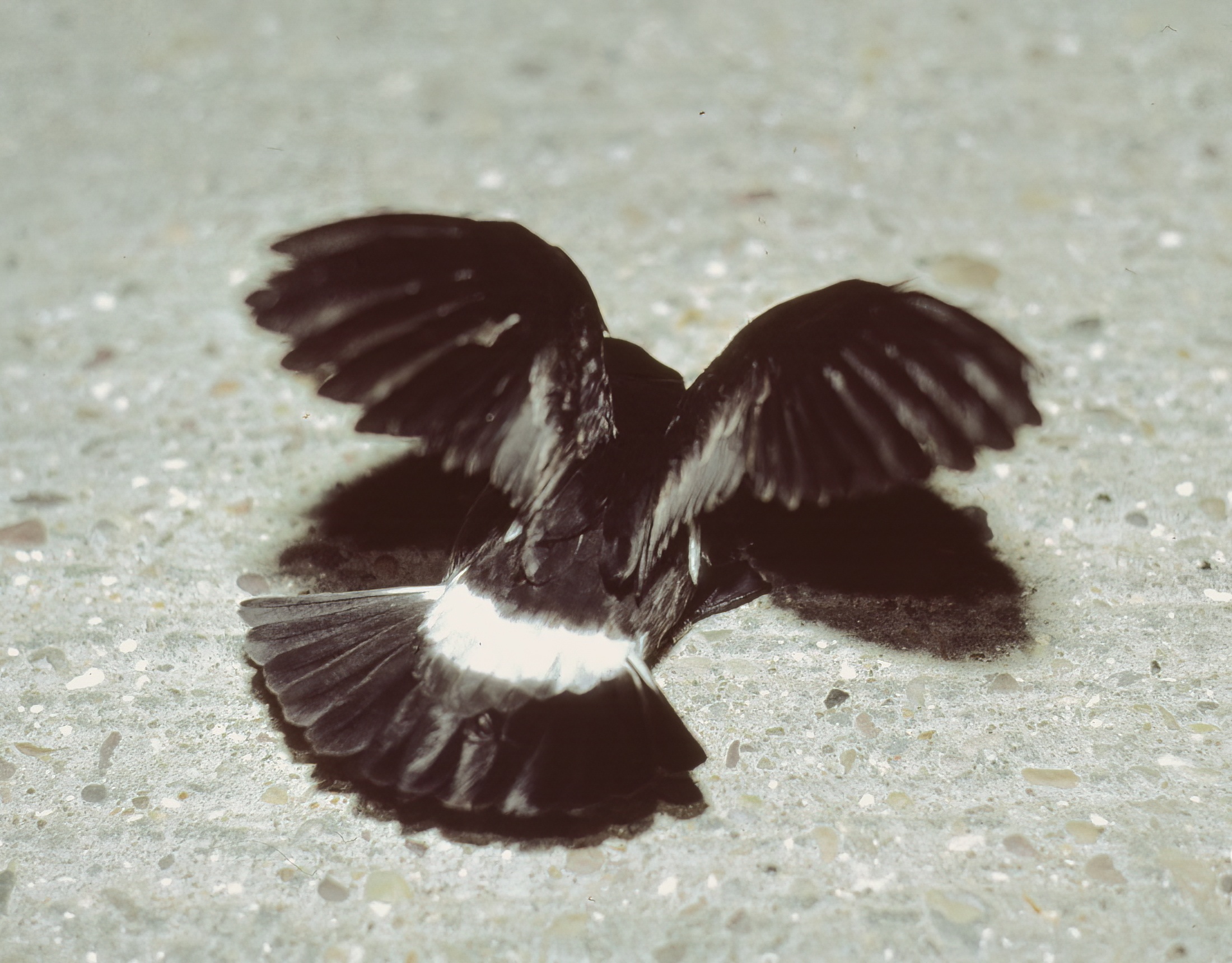European Storm Petrel Hydrobates pelagicus
One of the tape-lured and ringed European Storm Petrels caught at Huttoft in the hand and immediately after a safe release and return to the sea; photographs courtesy of Alan Ball.
Lorand and Atkin (1989) noted some historic records of a small number of storm-blown birds being picked up on the coast and at inland localities in the autumns between 1869-1889. Unusual numbers along the whole of the east coast in Nov 1883 resulted in at least four Lincolnshire records but there are no other details. The first authenticated record was one was seen at Witham Mouth on December 14th 1957; there have been around 14 records since 1971 up to the late 1980s, most between late August and October. Exceptions were one at Huttoft April 5th 1975 and one found dead at Anderby Creek January 25th 1987. In the modern era, Storm Petrel remain a very scarce offshore migrant as billed with 45 records involving 63 birds, albeit with some duplicate sightings as birds moved north or south past coastal seawatching sites. The most in any one year was three (Gibraltar Point 2013). Coastal sites recording these birds have been Barton upon Humber, Chapel St. Leonards, Freiston Shore, Gibraltar Point, Huttoft Car Terrace, Mablethorpe, Sandilands, Trusthorpe and Witham Mouth. Gibraltar Point has recorded the most with 18 1989-2020. In the same period, there have been 18 blank years.
Some nocturnal ringing activity 1989-2001 using a tape lure resulted in a small number of retraps which gave some very valuable insight into Storm Petrel movements off our coast. Six birds were ringed, and two of these birds were later controlled (retrapped) : one ringed on August 29th, 1989 was recaptured at Tarbat Ness, Highland on July 19th, 1991; the second was ringed on August 7th, 1992 and recaptured at Kråkenes Vågsoy, an island off south-western Norway, on Aug 25th, 1993. One caught on Jul 15th, 1994 had been ringed at Tynemouth two days earlier and was subsequently recaptured in July 1994 and 1995 on the Northumberland coast. An incredible return from a total of only six birds ringed.
(Account as per new Birds of Lincolnshire (2021), included September 2022)



